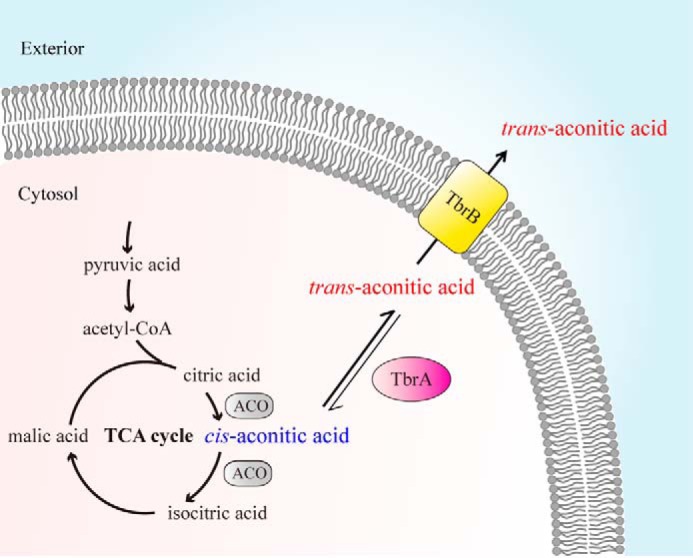FIGURE 8.

Model of the TAA biosynthetic pathway in B. thuringiensis. The TCA cycle synthesizes CAA through citric acid dehydration by ACO (gray). Instead of further hydration to isocitric acid by ACO, a portion of CAA is isomerized into TAA by aconitate isomerase TbrA (pink), which catalyzes the reversible reaction from CAA to TAA but favors the equilibrium for TAA, as indicated by the thicker black arrow. Intracellular TAA is then transported outside cells by the membrane-anchored TbrB protein (yellow), resulting in extracellular accumulation of TAA.
